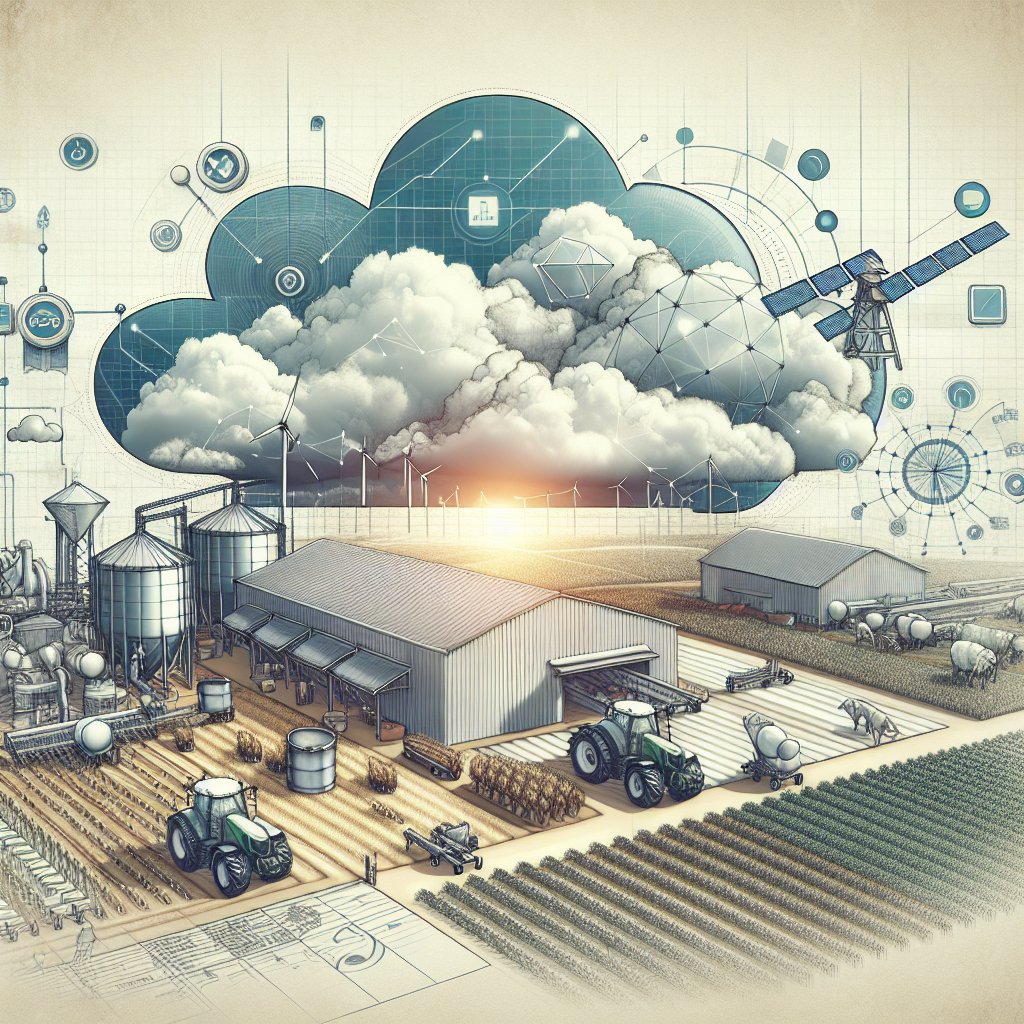Cloud computing is revolutionizing farm management systems by providing farmers with unprecedented access to data, analytics, and real-time decision-making tools. This transformation is not only enhancing productivity but also promoting sustainable agricultural practices. In this article, we will explore the various ways in which cloud computing is reshaping the agricultural landscape and delve into specific case studies that highlight its impact.
The Role of Cloud Computing in Modern Agriculture
Cloud computing has emerged as a game-changer in the agricultural sector, offering a range of benefits that were previously unimaginable. By leveraging cloud-based platforms, farmers can now access a wealth of information and tools that enable them to make more informed decisions. These platforms provide real-time data on weather conditions, soil health, crop growth, and pest infestations, allowing farmers to optimize their operations and improve yields.
Data Collection and Analysis
One of the most significant advantages of cloud computing in agriculture is its ability to collect and analyze vast amounts of data. Sensors placed in fields can monitor soil moisture levels, temperature, and other critical parameters. This data is then transmitted to cloud servers, where it is processed and analyzed using advanced algorithms. The insights gained from this analysis can help farmers make better decisions about irrigation, fertilization, and pest control, ultimately leading to higher crop yields and reduced resource wastage.
Precision Agriculture
Precision agriculture is another area where cloud computing is making a substantial impact. By using GPS technology and cloud-based software, farmers can create detailed maps of their fields and monitor crop health with pinpoint accuracy. This allows for targeted interventions, such as applying fertilizers or pesticides only where they are needed, reducing costs and minimizing environmental impact. Additionally, precision agriculture enables farmers to track the growth and development of their crops in real-time, ensuring that they can respond quickly to any issues that arise.
Case Studies: Cloud Computing in Action
To better understand the transformative power of cloud computing in agriculture, let’s examine a few case studies that highlight its practical applications and benefits.
Case Study 1: Smart Irrigation Systems
In regions where water scarcity is a significant concern, smart irrigation systems powered by cloud computing are proving to be invaluable. These systems use sensors to monitor soil moisture levels and weather conditions, transmitting this data to cloud servers for analysis. Based on the insights gained, the system can automatically adjust irrigation schedules to ensure that crops receive the optimal amount of water. This not only conserves water but also improves crop health and yields. For example, a vineyard in California implemented a cloud-based smart irrigation system and reported a 20% increase in grape production while reducing water usage by 30%.
Case Study 2: Livestock Management
Cloud computing is also transforming livestock management by providing farmers with real-time data on the health and well-being of their animals. Wearable devices equipped with sensors can monitor vital signs, activity levels, and feeding patterns, transmitting this information to cloud servers for analysis. Farmers can then access this data through a user-friendly dashboard, allowing them to identify any health issues early and take appropriate action. A dairy farm in New Zealand adopted a cloud-based livestock management system and saw a 15% reduction in veterinary costs and a 10% increase in milk production.
Case Study 3: Crop Monitoring and Disease Prediction
Crop diseases can have devastating effects on agricultural productivity, but cloud computing is helping farmers stay one step ahead. By using satellite imagery and machine learning algorithms, cloud-based platforms can monitor crop health and predict the likelihood of disease outbreaks. Farmers receive alerts and recommendations on preventive measures, enabling them to take timely action and minimize losses. A wheat farm in Australia utilized a cloud-based crop monitoring system and successfully reduced disease-related losses by 25%, resulting in a significant boost in overall productivity.
Challenges and Future Prospects
While the benefits of cloud computing in agriculture are undeniable, there are also challenges that need to be addressed. One of the primary concerns is data security and privacy. Farmers need to be assured that their data is protected and will not be misused. Additionally, the initial cost of implementing cloud-based systems can be a barrier for small-scale farmers. However, as technology continues to advance and become more affordable, these challenges are likely to diminish.
Integration with Other Technologies
The future of cloud computing in agriculture looks promising, especially when integrated with other emerging technologies such as the Internet of Things (IoT), artificial intelligence (AI), and blockchain. IoT devices can provide even more granular data, while AI can enhance predictive analytics and decision-making. Blockchain technology can ensure transparency and traceability in the supply chain, further boosting consumer confidence in agricultural products.
Government and Industry Support
Government and industry support will also play a crucial role in the widespread adoption of cloud computing in agriculture. Subsidies, grants, and training programs can help farmers overcome financial and technical barriers. Collaborative efforts between technology providers, agricultural organizations, and research institutions can drive innovation and ensure that the benefits of cloud computing are accessible to all farmers, regardless of their scale of operation.
Conclusion
Cloud computing is undeniably revolutionizing farm management systems, offering a range of benefits that enhance productivity, sustainability, and profitability. By providing real-time data, advanced analytics, and precision tools, cloud-based platforms are empowering farmers to make more informed decisions and optimize their operations. While challenges remain, the future of cloud computing in agriculture looks bright, with the potential to transform the industry and ensure food security for generations to come.










